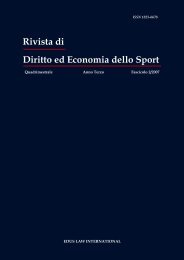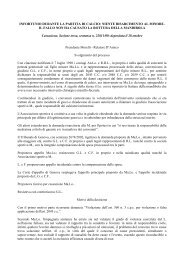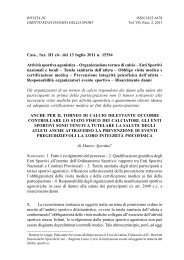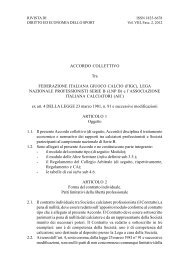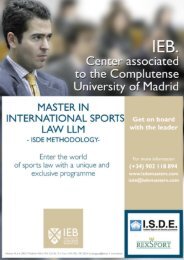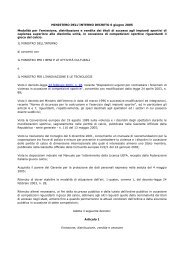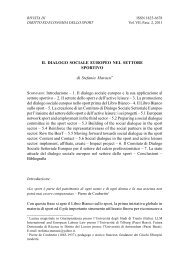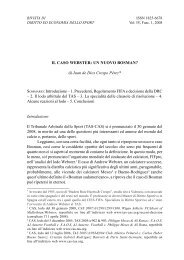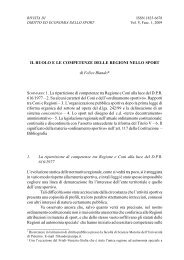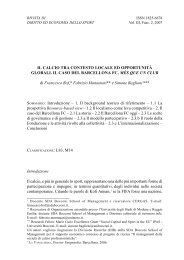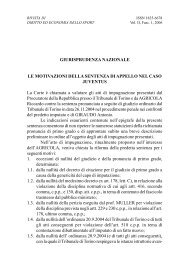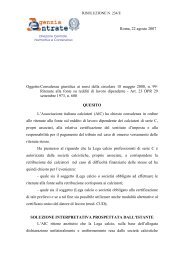European Sports Law and Policy Bulletin THE BERNARD ... - Slpc.eu
European Sports Law and Policy Bulletin THE BERNARD ... - Slpc.eu
European Sports Law and Policy Bulletin THE BERNARD ... - Slpc.eu
Create successful ePaper yourself
Turn your PDF publications into a flip-book with our unique Google optimized e-Paper software.
<strong>European</strong> <strong>Sports</strong> <strong>Law</strong> <strong>and</strong> <strong>Policy</strong> <strong>Bulletin</strong> 1/2010 - Chapter V 95In this judgment, in fact, the Court endorses the importance of uniformitywithin the Union. If it accepted that Community law does not apply to one particularbusiness sector, it consequently becomes practically impossible to preserve th<strong>eu</strong>nity so keenly pursued.2. Specific implications: allocation of costsThe judgment is also significant in other respects. The opinion of the AdvocateGeneral Sharpston is important in this context where the allocation of trainingcosts is concerned. She does not confine herself to the professional pursuit ofsport in her analysis, but considers the general situation with regard to trainingcosts, placing great emphasis on the differentiation in the allocation of trainingcosts incurred by the employer. When these costs are passed on, it is possible thatthey will be recovered from the employee himself or from his new employer.The Advocate General states that when the employee himself must repaythe training costs incurred for him, the costs in question can only be the costsactually incurred. A different criterion applies when these costs can be claimedfrom a subsequent employer. By taking on a trained employee, the new employeris saving the costs for a training system required for the adequate training ofemployees. In such cases, the total costs of training <strong>and</strong> a reasonable allocation ofthese may be taken into account. What the Advocate General is saying in fact isthat the (training) costs should be assigned to the proper party.The FIFA system for training <strong>and</strong> education that came into effect inconsultation with the <strong>European</strong> Commission after the Bosman judgment is basedon the recovery of training costs from a player’s new club. This does justice to thesystem of <strong>European</strong> law as set out by the Advocate General.The same system for the allocation of costs is contained in the compensationrule in the event that a player breaches his contract without having just cause todo so. On the basis of the FIFA regulations, 6 both the player <strong>and</strong> his new club arejointly <strong>and</strong> severally liable for payment of the compensation in relation to the breachof contract. In practice, it is always the club that pays the compensation.Part of that compensation may be the as-yet unamortised portion of thefee that the club paid to the previous club for the transfer of the player. In cases ofthis kind, these may be very substantial amounts, on which the player himself hasno influence whatsoever. The clubs alone conclude a mutual agreement on thetransfer fee for a player.The player experiences no direct disadvantage, due to the fact that thesecosts are allocated to the next club. Indirectly, however, it may mean that theplayer is no longer able to find a new club, because a very substantial price tag isattached to him <strong>and</strong> there is little interest on the part of other clubs as a result. Anexample of this is Ariel Ortega, who could not find another top club after the____________________6Art. 17 par. 2 FIFA Regulations on the Status <strong>and</strong> Transfer of Players (2010).



